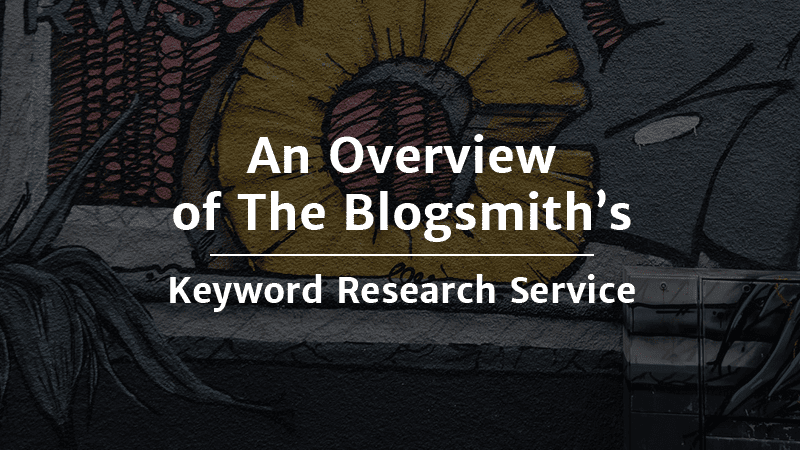Keyword research is the foundation of search engine optimization (SEO) success. To stand out as a content agency that creates content that ranks, we dig beneath the surface and make data-driven decisions when it comes to our keyword research service.
The Blogsmith team starts every workflow with keyword research when clients approach us for SEO content writing projects. But clients sometimes want to skip this part by reasoning that they “already have target keywords.”
While we prioritize our clients’ input and aim to maintain a collaborative content creation process, the keywords provided aren’t always sufficient and leave us less control over what needs to be done for the content to rank.
So, we recommend clients make use of our advanced keyword research services.
With this guide, you’ll learn what our process looks like and how you’ll benefit from it.
Keep reading to find:
Reasons To Use The Blogsmith’s Keyword Research Service
- It’s included in your content package. When you hop on a call with our content manager to discuss your goals, she’ll often suggest long-form content if your goal is to rank for keywords. Our keyword research service is included when you sign up for a long-form content package.
- Expertise. Our team is knowledgeable in the latest keyword research strategies and methods. We offer expert advice if you need to rethink your chosen target keywords.
- High-level SEO tools. We invest heavily in our tech stack, using industry-standard SEO tools to reap the benefits each offers. These top-notch tools help us in each stage of the keyword research process.
- Keyword rank monitoring. We don’t just pull keywords, write content, and call a project done. We keep track of all the keywords we use and provide you with useful reports to help with your content strategy and monitoring keyword success.
The Blogsmith’s Keyword Research Process
- Topic analysis
- Buyer’s journey and search intent discovery
- Look for target keywords
- Valuable long-tail keywords
- Competitor analysis
- Question ideas and content structure
- Semantic keyword suggestions
- Features snippet opportunities
- Content Optimization report
1. Topic Analysis
Poor keyword targeting is frequently the result of insufficient research. Before starting our keyword research process, we first try to understand the topic to identify possible concepts to help decide which keywords to use.
2. Buyer’s Journey and Search Intent Discovery
After topic analysis, the second part of our advanced keyword research process is considering the search intent to understand the buyer’s journey.
Search intent is the key to growing your online presence and attracting new customers. There are different types of search intent present at every stage of the buyer’s journey. However, when doing keyword research, many SEOs often disregard both — causing content to rank for the wrong keywords or be shared to the wrong audiences.
Keyword targeting based on misconstrued intent is a waste of money.
Another missed opportunity is when clients have a keyword in mind, but the keywords don’t reflect the search intent and their proposed content angle. One of the most important steps we take is to identify the type of intent we appeal for a given topic. Our keyword research includes detailed explanation on how writers will optimize and meet the type of intent.
Common Types of Search Intent
SEOs have identified three kinds of search intent, however, Google and other search engines has evolved to distinguish between more precise intentions.
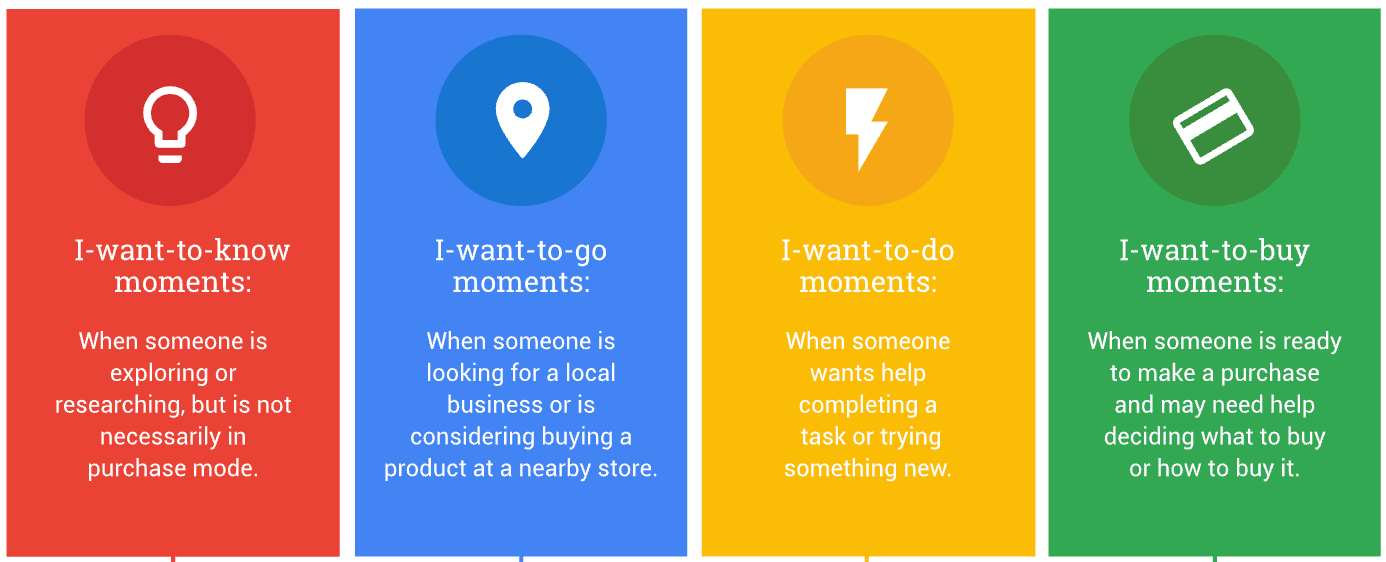
Informational Intent
Informational intent keywords come from users who are looking for information and have questions that need answers.
Optimizing for these keywords may not lead to a sale just yet, but they represent ways to engage customers early in the buying process. You can think of informational intent searchers as people at the top of the sales funnel or customers in the awareness stage of the buyer’s journey.
Another great thing about optimizing for informational intent keywords is that it gives your content a shot at ranking for the featured snippet (position zero) and presents your business as an authority, which is especially crucial when you sell informational products such as online courses and guides.
The best type of content for informational keywords includes:
- How-to guides
- Infographics
- Blog posts
- Whitepaper
Navigational Intent
Navigational intent keywords come from users searching for a specific brand or company. At this point, users are at the consideration phase of the buyer’s journey since they’re either looking for the best or nearest service or navigating to a specific website.
For example, if someone is looking for Netflix’s website, it’s often easier to do a quick Google search than type out the URL.
If you have a SaaS product, queries that fall on this intent usually have patterns like “product name + product feature + software” or “feature + in + product name” which means users are already specific about their queries’ destination.
Examples of content to publish when you want to optimize for navigational intent include:
- Products Guides
- Support Pages
- Products Updates & Release Pages
- Forum Pages
- Sign-in Page
You can also use navigational intent to optimize for local SEO. For example, the keyword “Colorado SEO content agency” indicates that the searcher is looking to hire an SEO content agency in the Colorado area.
Commercial/Investigational Intent
Searchers at this stage often compare products and brands to find the best solution for them as well as getting more details about a company, or a service for reputational search.
Usually, it indicates a strong desire to research the reputation of a business or product.
Examples of content to publish when you want to optimize for investigational intent include:
- Case Studies
- Product Reviews
- Comparison Pages
Transactional Intent
Users at the last stage of the buyer’s journey use transactional keyword phrases. These keywords signal intent to take action — whether it’s buying, downloading, or signing up for a service.
Some keywords that signal transactional intent include action phrases or sales terms such as:
- Buy
- Discount
- Download
- Order
- Purchase
- Reserve
- Sale
At the transactional stage, invite customers to take action. Create content that includes sign-up, consultation, or sales pages.
After we analyzed search intent and the buyer’s journey, we then chose the best fit target keywords.
3. Look for Target Keywords
There are two ways to look for target keywords: doing your own research or competitor research. The Blogsmith’s advanced keyword research service does both.
When you do your own research, it’s essential to understand the various factors that go into choosing good keywords — you can’t choose a keyword just because it sounds appropriate. You need to validate your keywords with real data.
The top three considerations are:
- Search intent and relevance. We discussed the importance of intent and relevance in the previous section. Remember, one qualified customer is more valuable than 100 unqualified visitors who won't buy and immediately leave your website when they realize it fails to deliver the information they were expecting.
- Search volume. We aim for high keyword search volume as it is the strongest signal that many users are searching for those terms. When looking at search volume, we also consider the ranking difficulty.
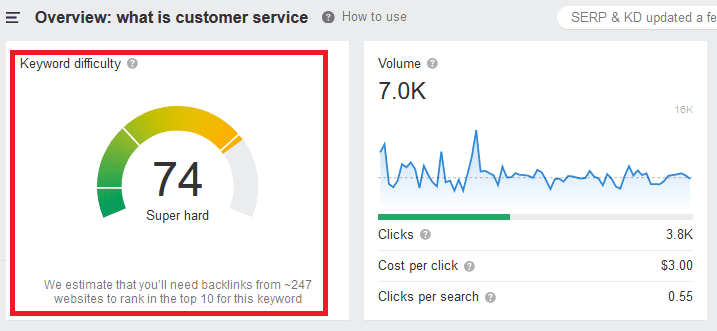
Screenshot
- Ranking difficulty. While it’s good to target a high search volume, we evaluate if it’s harder to rank for those terms. The ranking difficulty score measures the ease at which you can compete with already-ranking results and depends on your website’s overall authority.
For the most part, we evaluate the domain rating to see if you can currently rank for a given keyword. For newer websites, we target keywords with lower difficulty scores as you build up your website’s authority.
4. Valuable Long-Tail Keywords
Whenever we choose a target keyword, we carefully consider the long-tail variations that can be added.
Most search queries consist of long-tail keywords (keywords with more than four words that make up the keyword phrase). These keywords are easier to rank for because fewer people search for them.
On the upside, long-tail keywords have 3–6% higher clickthrough rates than generic searches. It indicates that users making these queries are very specific and already know what they want. Long-tail keywords can also help you rank for short-tail keywords too.
5. Competitor Analysis
As we mentioned, The Blogsmith performs both our own keyword research and competitor analysis as part of our keyword research service.
We perform competitor analysis to identify what keywords they are ranking for, and what questions they are trying to answer. We also gather more data to understand why they’re ranking on top. This includes their domain and page authority, heading structure, and even the meta data they used.
Ahrefs is one of the competitor analysis tools we use to generate reports that show your competitors’ top keywords.
6. Question Ideas and Content Structure
Each piece of content should solve a specific problem, and it typically begins with identifying the questions people have. These questions are often related to the search intent determined in step two.
For example, people searching for information will ask different questions than people looking to purchase.
Some clients send us their research with some People Also Ask questions grabbed from Google, but that’s not enough — we also look for unique angles such as relevant questions that haven’t been answered to differentiate your content from competitors.
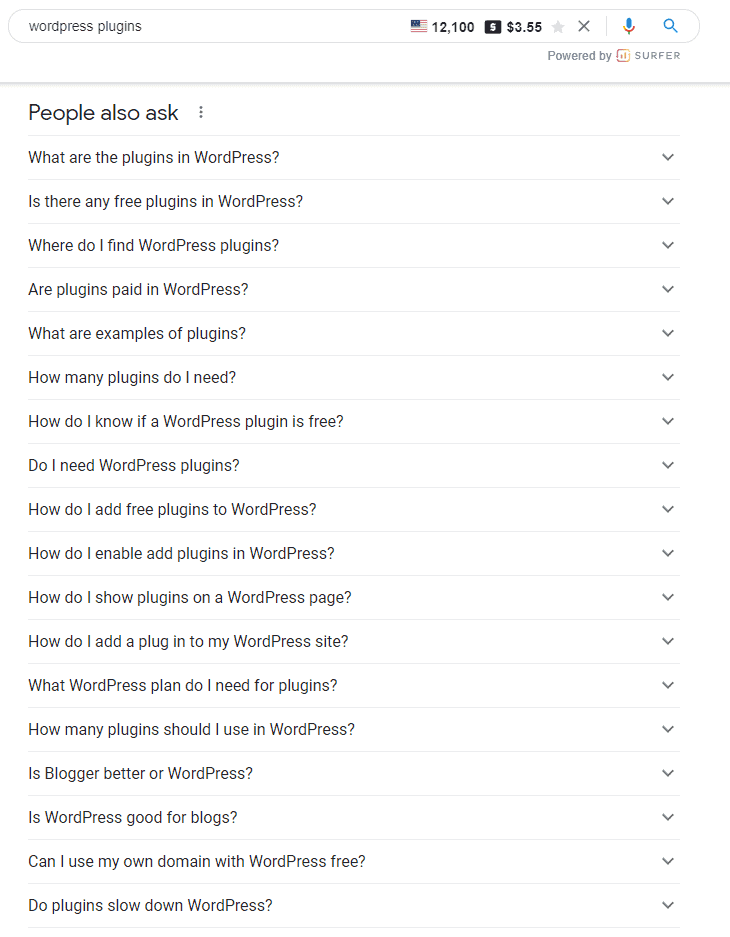
Defining the questions will also help guide the content structure.
7. Semantic Keyword Suggestions
Back in the day, Google used to evaluate an article purely based on single queries. Today, search engines consider more factors than just your target keywords, and that includes semantic keywords.
Semantic keywords are keywords conceptually related to the original keyword. For example, if your main keyword is “social media,” you have “tweet” or “post” as a semantic keyword.
Semantic keywords are important because they give search engines more insight into your content, which is crucial if you want it to rank well. Imagine writing about pens (the writing instrument) but getting ranked for pig pens. Semantic keywords can help prevent mishaps like that.
As part of our advanced keyword research process, we research semantically-related terms from several data sources and balance multiple priorities. We use high-level content optimization tools such as Clearscope, MarketMuse, and Frase to generate reports that help measure and suggest highly-relevant terms.
8. Featured Snippet Opportunities
For every piece of long-form content you commission, we also look for relevant keywords that may land the article in Google’s featured snippet.
Featured snippets are short blurbs of text appearing at the top of organic search engine results that quickly answer a search query. Also known as “rank zero,” featured snippets are an opportunity to get more clicks.
To maximize this opportunity, we don’t just focus on the primary keyword. We do thorough research to find relevant terms around the topic to optimize for featured snippets.
Finding featured snippet opportunities is a helpful strategy, especially when clients select highly competitive target keywords. Ranking for competitive keywords can be an uphill battle, so we seek faster wins in other ways. 😉
9. Content Optimization Report
Part of our advanced keyword research is sharing content optimization reports.
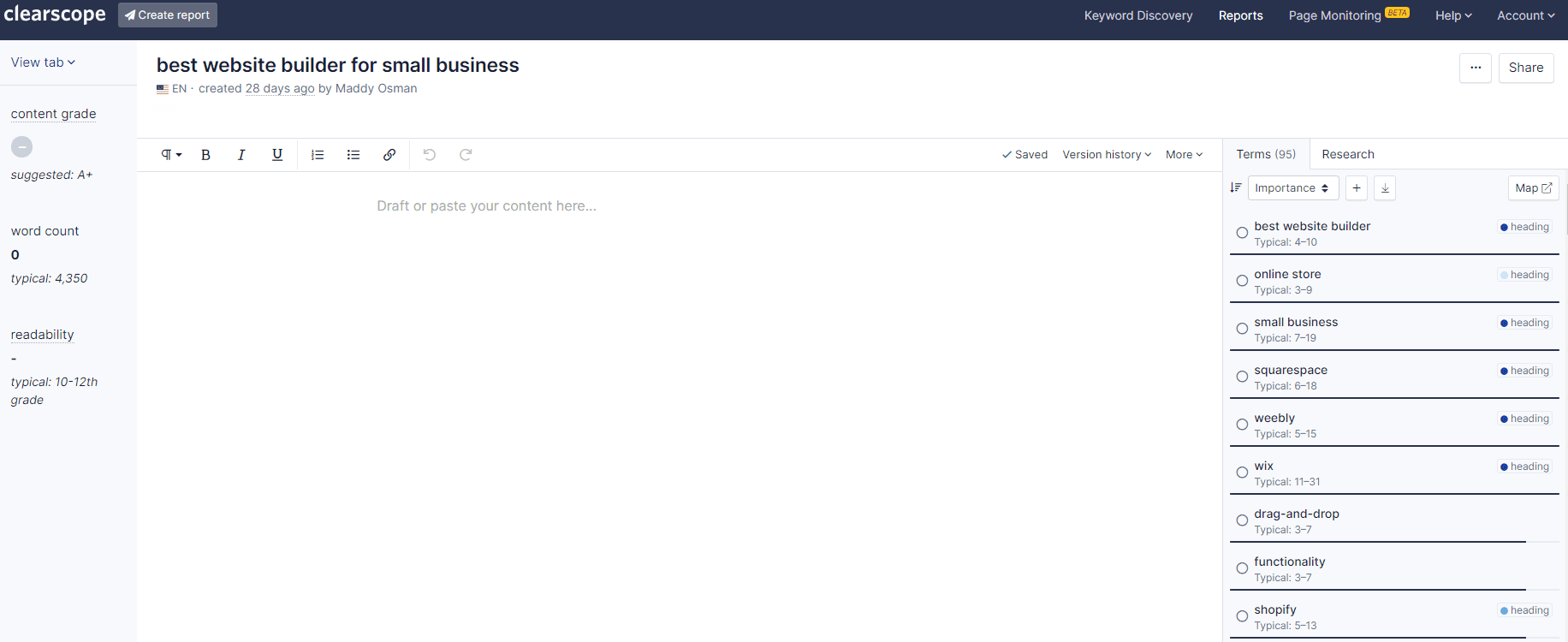
We generate these reports using premium tools like Clearscope. The reports provide a wide range of research sources and SEO recommendations based on a given primary keyword, which helps both writers and clients assess how well the article is optimized at the end of the writing process.
Final Thoughts: Advanced Keyword Research — The Blogsmith’s SEO Approach
A content’s full ranking potential isn’t just within one or two keywords. We strive to go a step further, making sure no stone is left unturned.
Ready to reap the benefits of SEO-optimized content? Get in touch with The Blogsmith today.

